Java8中Stream详细用法大全
Posted 大梦谁先觉i
tags:
篇首语:本文由小常识网(cha138.com)小编为大家整理,主要介绍了Java8中Stream详细用法大全相关的知识,希望对你有一定的参考价值。
一、概述
Java 8 是一个非常成功的版本,这个版本新增的Stream,配合同版本出现的Lambda ,给我们操作集合(Collection)提供了极大的便利。Stream流是JDK8新增的成员,允许以声明性方式处理数据集合,可以把Stream流看作是遍历数据集合的一个高级迭代器。Stream 是 Java8 中处理集合的关键抽象概念,它可以指定你希望对集合进行的操作,可以执行非常复杂的查找/筛选/过滤、排序、聚合和映射数据等操作。使用Stream API 对集合数据进行操作,就类似于使用 SQL 执行的数据库查询。也可以使用 Stream API 来并行执行操作。简而言之,Stream API 提供了一种高效且易于使用的处理数据的方式。
1、使用流的好处
代码以声明性方式书写,说明想要完成什么,而不是说明如何完成一个操作。
可以把几个基础操作连接起来,来表达复杂的数据处理的流水线,同时保持代码清晰可读。
2、流是什么?
从支持数据处理操作的源生成元素序列.数据源可以是集合,数组或IO资源。
从操作角度来看,流与集合是不同的. 流不存储数据值; 流的目的是处理数据,它是关于算法与计算的。
如果把集合作为流的数据源,创建流时不会导致数据流动; 如果流的终止操作需要值时,流会从集合中获取值; 流只使用一次。
流中心思想是延迟计算,流直到需要时才计算值。
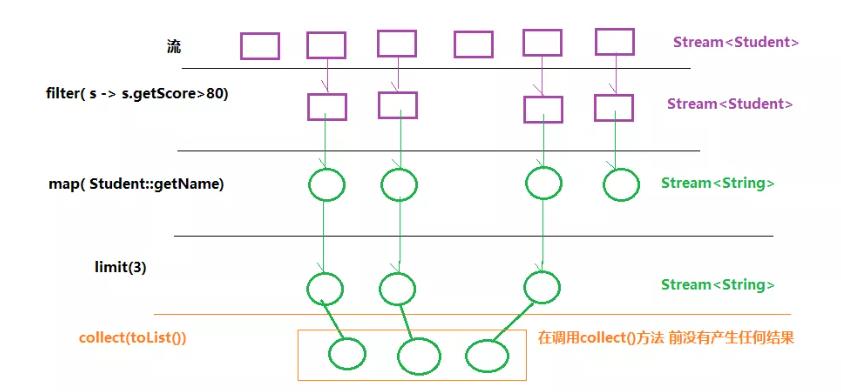
Stream可以由数组或集合创建,对流的操作分为两种:
中间操作,每次返回一个新的流,可以有多个。
终端操作,每个流只能进行一次终端操作,终端操作结束后流无法再次使用。终端操作会产生一个新的集合或值。
特性:
不是数据结构,不会保存数据。
不会修改原来的数据源,它会将操作后的数据保存到另外一个对象中。(保留意见:毕竟peek方法可以修改流中元素)
惰性求值,流在中间处理过程中,只是对操作进行了记录,并不会立即执行,需要等到执行终止操作的时候才会进行实际的计算。
二、分类
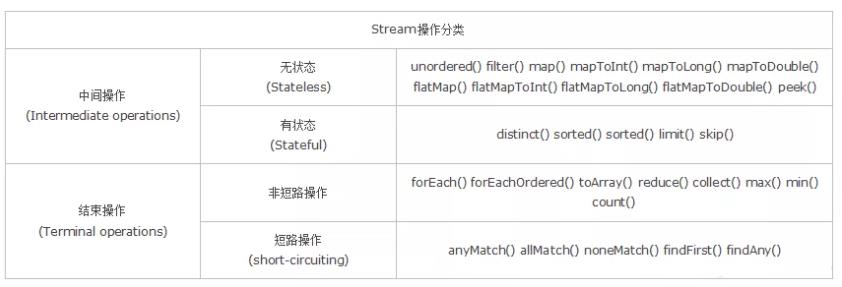
无状态:指元素的处理不受之前元素的影响;
有状态:指该操作只有拿到所有元素之后才能继续下去。
非短路操作:指必须处理所有元素才能得到最终结果;
短路操作:指遇到某些符合条件的元素就可以得到最终结果,如 A || B,只要A为true,则无需判断B的结果。
三、Stream的创建
Stream可以通过集合数组创建。
1、通过 java.util.Collection.stream() 方法用集合创建流
List<String> list = Arrays.asList("a", "b", "c");
// 创建一个顺序流
Stream<String> stream = list.stream();
// 创建一个并行流
Stream<String> parallelStream = list.parallelStream();
2、使用 java.util.Arrays.stream(T[]array)方法用数组创建流
int[] array=1,3,5,6,8;
IntStream stream = Arrays.stream(array);
3、使用 Stream的静态方法:of()、iterate()、generate()
Stream<Integer> stream = Stream.of(1, 2, 3, 4, 5, 6);
Stream<Integer> stream2 = Stream.iterate(0, (x) -> x + 3).limit(4);
stream2.forEach(System.out::println);
Stream<Double> stream3 = Stream.generate(Math::random).limit(3);
stream3.forEach(System.out::println);
输出结果:
0 3 6 9
0.6796156909271994
0.1914314208854283
0.8116932592396652
stream和 parallelStream的简单区分:stream是顺序流,由主线程按顺序对流执行操作,而 parallelStream是并行流,内部以多线程并行执行的方式对流进行操作,但前提是流中的数据处理没有顺序要求。例如筛选集合中的奇数,两者的处理不同之处:
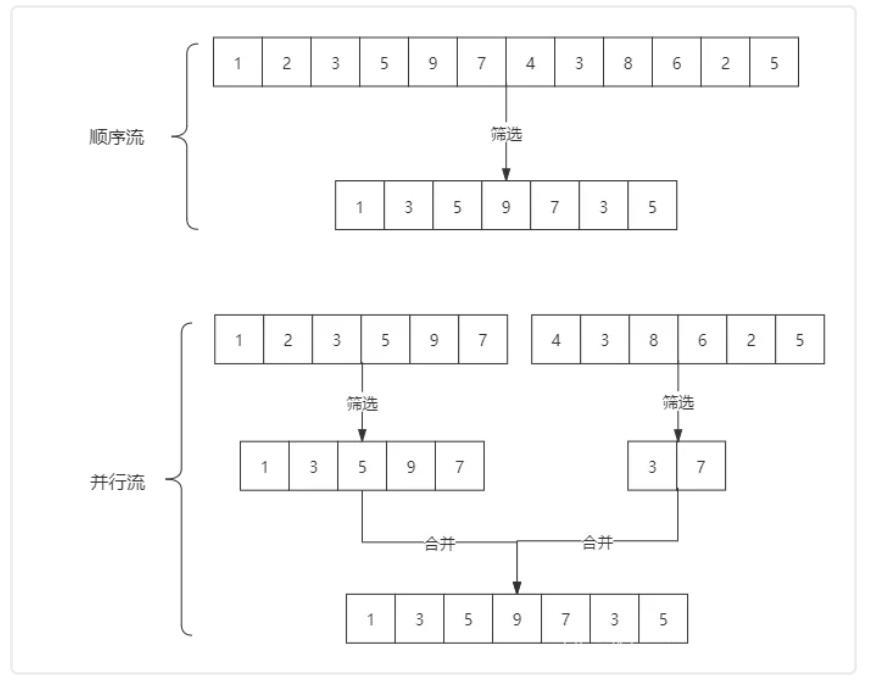
如果流中的数据量足够大,并行流可以加快处速度。
除了直接创建并行流,还可以通过 parallel()把顺序流转换成并行流:
Optional<Integer> findFirst = list.stream().parallel().filter(x->x>6).findFirst();
四、Stream API简介
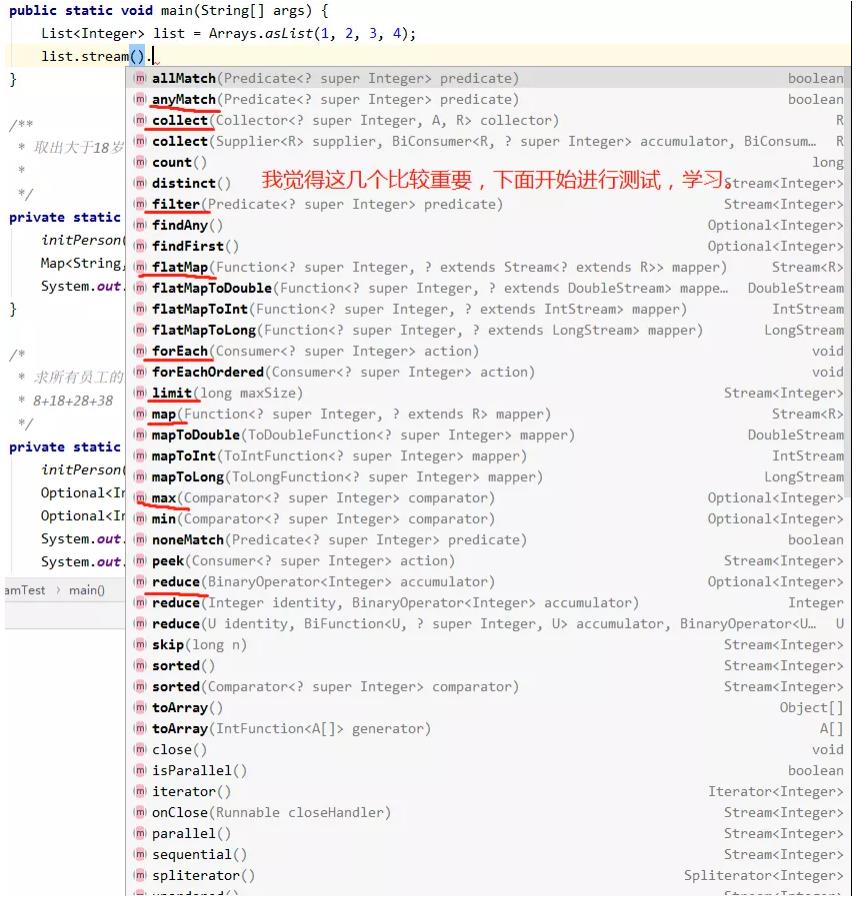
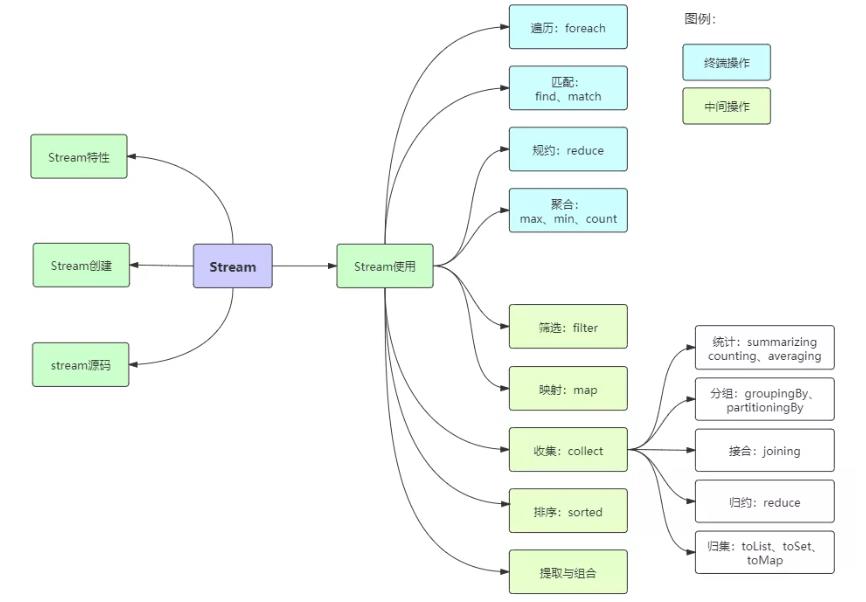
先贴上几个案例,水平高超的同学可以挑战一下:
从员工集合中筛选出salary大于8000的员工,并放置到新的集合里。
统计员工的最高薪资、平均薪资、薪资之和。
将员工按薪资从高到低排序,同样薪资者年龄小者在前。
将员工按性别分类,将员工按性别和地区分类,将员工按薪资是否高于8000分为两部分。
用传统的迭代处理也不是很难,但代码就显得冗余了,跟Stream相比高下立判。
前提:员工类
static List<Person> personList = new ArrayList<Person>();
private static void initPerson()
personList.add(new Person("张三", 8, 3000));
personList.add(new Person("李四", 18, 5000));
personList.add(new Person("王五", 28, 7000));
personList.add(new Person("孙六", 38, 9000));
1、遍历/匹配(foreach/find/match)
Stream也是支持类似集合的遍历和匹配元素的,只是 Stream中的元素是以 Optional类型存在的。Stream的遍历、匹配非常简单。
// import已省略,请自行添加,后面代码亦是
public class StreamTest
public static void main(String[] args)
List<Integer> list = Arrays.asList(7, 6, 9, 3, 8, 2, 1);
// 遍历输出符合条件的元素
list.stream().filter(x -> x > 6).forEach(System.out::println);
// 匹配第一个
Optional<Integer> findFirst = list.stream().filter(x -> x > 6).findFirst();
// 匹配任意(适用于并行流)
Optional<Integer> findAny = list.parallelStream().filter(x -> x > 6).findAny();
// 是否包含符合特定条件的元素
boolean anyMatch = list.stream().anyMatch(x -> x < 6);
System.out.println("匹配第一个值:" + findFirst.get());
System.out.println("匹配任意一个值:" + findAny.get());
System.out.println("是否存在大于6的值:" + anyMatch);
2、按条件匹配filter
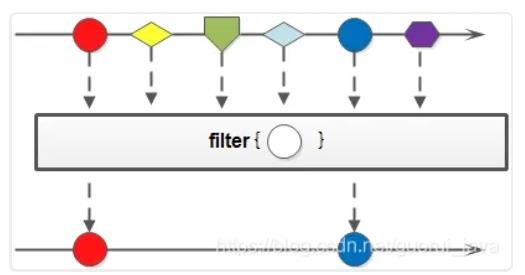
(1)筛选员工中已满18周岁的人,并形成新的集合
/**
* 筛选员工中已满18周岁的人,并形成新的集合
* @思路
* List<Person> list = new ArrayList<Person>();
* for(Person person : personList)
* if(person.getAge() >= 18)
* list.add(person);
*
*
*/
private static void filter01()
initPerson();
List<Person> collect = personList.stream().filter(x -> x.getAge()>=18).collect(Collectors.toList());
System.out.println(collect);

(2)自定义条件匹配

3、聚合max、min、count

(1)获取String集合中最长的元素
/**
* 获取String集合中最长的元素
* @思路
* List<String> list = Arrays.asList("zhangsan", "lisi", "wangwu", "sunliu");
* String max = "";
* int length = 0;
* int tempLength = 0;
* for(String str : list)
* tempLength = str.length();
* if(tempLength > length)
* length = str.length();
* max = str;
*
*
* @return zhangsan
*/
private static void test02()
List<String> list = Arrays.asList("zhangsan", "lisi", "wangwu", "sunliu");
Comparator<? super String> comparator = Comparator.comparing(String::length);
Optional<String> max = list.stream().max(comparator);
System.out.println(max);

(2)获取Integer集合中的最大值
//获取Integer集合中的最大值
private static void test05()
List<Integer> list = Arrays.asList(1, 17, 27, 7);
Optional<Integer> max = list.stream().max(Integer::compareTo);
// 自定义排序
Optional<Integer> max2 = list.stream().max(new Comparator<Integer>()
@Override
public int compare(Integer o1, Integer o2)
return o1.compareTo(o2);
);
System.out.println(max2);

//获取员工中年龄最大的人
private static void test06()
initPerson();
Comparator<? super Person> comparator = Comparator.comparingInt(Person::getAge);
Optional<Person> max = personList.stream().max(comparator);
System.out.println(max);
(3)获取员工中年龄最大的人

(4)计算integer集合中大于10的元素的个数
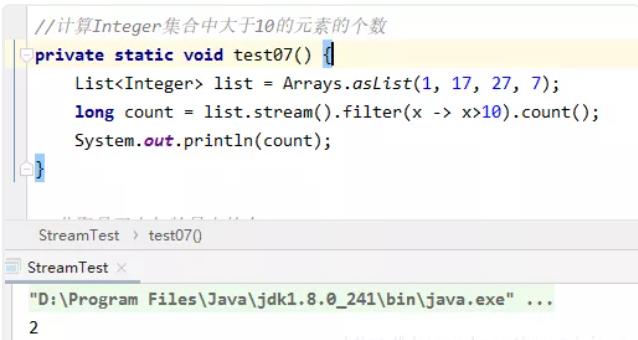
4、map与flatMap
map:接收一个函数作为参数,该函数会被应用到每个元素上,并将其映射成一个新的元素。
flatMap:接收一个函数作为参数,将流中的每个值都换成另一个流,然后把所有流连接成一个流。
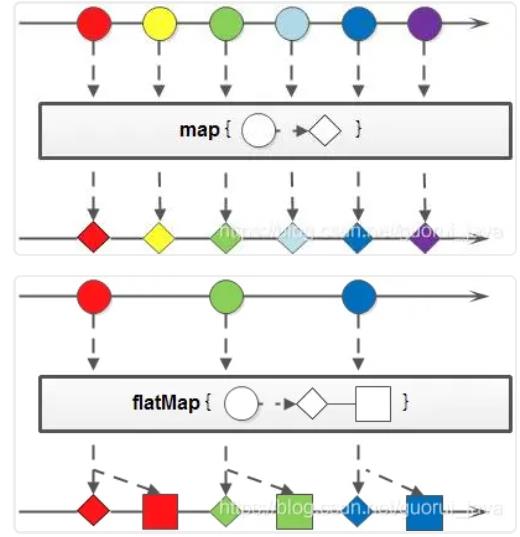
(1)字符串大写

(2)整数数组每个元素+3
/**
* 整数数组每个元素+3
* @思路
* List<Integer> list = Arrays.asList(1, 17, 27, 7);
List<Integer> list2 = new ArrayList<Integer>();
for(Integer num : list)
list2.add(num + 3);
@return [4, 20, 30, 10]
*/
private static void test09()
List<Integer> list = Arrays.asList(1, 17, 27, 7);
List<Integer> collect = list.stream().map(x -> x + 3).collect(Collectors.toList());
System.out.println(collect);
(3)公司效益好,每人涨2000
/**
* 公司效益好,每人涨2000
*
*/
private static void test10()
initPerson();
List<Person> collect = personList.stream().map(x ->
x.setSalary(x.getSalary()+2000);
return x;
).collect(Collectors.toList());
System.out.println(collect);
(4)将两个字符数组合并成一个新的字符数组
/**
* 将两个字符数组合并成一个新的字符数组
*
*/
private static void test11()
String[] arr = "z, h, a, n, g", "s, a, n";
List<String> list = Arrays.asList(arr);
System.out.println(list);
List<String> collect = list.stream().flatMap(x ->
String[] array = x.split(",");
Stream<String> stream = Arrays.stream(array);
return stream;
).collect(Collectors.toList());
System.out.println(collect);
(5)将两个字符数组合并成一个新的字符数组
/**
* 将两个字符数组合并成一个新的字符数组
* @return [z, h, a, n, g, s, a, n]
*/
private static void test11()
String[] arr = "z, h, a, n, g", "s, a, n";
List<String> list = Arrays.asList(arr);
List<String> collect = list.stream().flatMap(x ->
String[] array = x.split(",");
Stream<String> stream = Arrays.stream(array);
return stream;
).collect(Collectors.toList());
System.out.println(collect);
5、规约reduce
归约,也称缩减,顾名思义,是把一个流缩减成一个值,能实现对集合求和、求乘积和求最值操作。

(1)求Integer集合的元素之和、乘积和最大值
/**
* 求Integer集合的元素之和、乘积和最大值
*
*/
private static void test13()
List<Integer> list = Arrays.asList(1, 2, 3, 4);
//求和
Optional<Integer> reduce = list.stream().reduce((x,y) -> x+ y);
System.out.println("求和:"+reduce);
//求积
Optional<Integer> reduce2 = list.stream().reduce((x,y) -> x * y);
System.out.println("求积:"+reduce2);
//求最大值
Optional<Integer> reduce3 = list.stream().reduce((x,y) -> x>y?x:y);
System.out.println("求最大值:"+reduce3);
(2)求所有员工的工资之和和最高工资
/*
* 求所有员工的工资之和和最高工资
*/
private static void test14()
initPerson();
Optional<Integer> reduce = personList.stream().map(Person :: getSalary).reduce(Integer::sum);
Optional<Integer> reduce2 = personList.stream().map(Person :: getSalary).reduce(Integer::max);
System.out.println("工资之和:"+reduce);
System.out.println("最高工资:"+reduce2);
6、收集(toList、toSet、toMap)
取出大于18岁的员工转为map
/**
* 取出大于18岁的员工转为map
*
*/
private static void test15()
initPerson();
Map<String, Person> collect = personList.stream().filter(x -> x.getAge() > 18).collect(Collectors.toMap(Person::getName, y -> y));
System.out.println(collect);
7、collect
Collectors提供了一系列用于数据统计的静态方法:
计数: count
平均值: averagingInt、 averagingLong、 averagingDouble
最值: maxBy、 minBy
求和: summingInt、 summingLong、 summingDouble
统计以上所有: summarizingInt、 summarizingLong、 summarizingDouble
/**
* 统计员工人数、平均工资、工资总额、最高工资
*/
private static void test01()
//统计员工人数
Long count = personList.stream().collect(Collectors.counting());
//求平均工资
Double average = personList.stream().collect(Collectors.averagingDouble(Person::getSalary));
//求最高工资
Optional<Integer> max = personList.stream().map(Person::getSalary).collect(Collectors.maxBy(Integer::compare));
//求工资之和
Integer sum = personList.stream().collect(Collectors.summingInt(Person::getSalary));
//一次性统计所有信息
DoubleSummaryStatistics collect = personList.stream().collect(Collectors.summarizingDouble(Person::getSalary));
System.out.println("统计员工人数:"+count);
System.out.println("求平均工资:"+average);
System.out.println("求最高工资:"+max);
System.out.println("求工资之和:"+sum);
System.out.println("一次性统计所有信息:"+collect);
8、分组(partitioningBy/groupingBy)
分区:将stream按条件分为两个 Map,比如员工按薪资是否高于8000分为两部分。
分组:将集合分为多个Map,比如员工按性别分组。有单级分组和多级分组。

将员工按薪资是否高于8000分为两部分;将员工按性别和地区分组
public class StreamTest
public static void main(String[] args)
personList.add(new Person("zhangsan",25, 3000, "male", "tieling"));
personList.add(new Person("lisi",27, 5000, "male", "tieling"));
personList.add(new Person("wangwu",29, 7000, "female", "tieling"));
personList.add(new Person("sunliu",26, 3000, "female", "dalian"));
personList.add(new Person("yinqi",27, 5000, "male", "dalian"));
personList.add(new Person("guba",21, 7000, "female", "dalian"));
// 将员工按薪资是否高于8000分组
Map<Boolean, List<Person>> part = personList.stream().collect(Collectors.partitioningBy(x -> x.getSalary() > 8000));
// 将员工按性别分组
Map<String, List<Person>> group = personList.stream().collect(Collectors.groupingBy(Person::getSex));
// 将员工先按性别分组,再按地区分组
Map<String, Map<String, List<Person>>> group2 = personList.stream().collect(Collectors.groupingBy(Person::getSex, Collectors.groupingBy(Person::getArea)));
System.out.println("员工按薪资是否大于8000分组情况:" + part);
System.out.println("员工按性别分组情况:" + group);
System.out.println("员工按性别、地区:" + group2);
9、连接joining
joining可以将stream中的元素用特定的连接符(没有的话,则直接连接)连接成一个字符串。

10、排序sorted
将员工按工资由高到低(工资一样则按年龄由大到小)排序
private static void test04()
// 按工资升序排序(自然排序)
List<String> newList = personList.stream().sorted(Comparator.comparing(Person::getSalary)).map(Person::getName)
.collect(Collectors.toList());
// 按工资倒序排序
List<String> newList2 = personList.stream().sorted(Comparator.comparing(Person::getSalary).reversed())
.map(Person::getName).collect(Collectors.toList());
// 先按工资再按年龄升序排序
List<String> newList3 = personList.stream()
.sorted(Comparator.comparing(Person::getSalary).thenComparing(Person::getAge)).map(Person::getName)
.collect(Collectors.toList());
// 先按工资再按年龄自定义排序(降序)
List<String> newList4 = personList.stream().sorted((p1, p2) ->
if (p1.getSalary() == p2.getSalary())
return p2.getAge() - p1.getAge();
else
return p2.getSalary() - p1.getSalary();
).map(Person::getName).collect(Collectors.toList());
System.out.println("按工资升序排序:" + newList);
System.out.println("按工资降序排序:" + newList2);
System.out.println("先按工资再按年龄升序排序:" + newList3);
System.out.println("先按工资再按年龄自定义降序排序:" + newList4);
11、提取/组合
流也可以进行合并、去重、限制、跳过等操作。
private static void test05()
String[] arr1 = "a", "b", "c", "d" ;
String[] arr2 = "d", "e", "f", "g" ;
Stream<String> stream1 = Stream.of(arr1);
Stream<String> stream2 = Stream.of(arr2);
// concat:合并两个流 distinct:去重
ListJava8 stream的详细用法
一、概述
Stream 是 Java8 中处理集合的关键抽象概念,它可以指定你希望对集合进行的操作,可以执行非常复杂的查找、过滤和映射数据等操作。使用Stream API 对集合数据进行操作,就类似于使用 SQL 执行的数据库查询。也可以使用 Stream API 来并行执行操作。简而言之,Stream API 提供了一种高效且易于使用的处理数据的方式。
特点:
1 . 不是数据结构,不会保存数据。
2. 不会修改原来的数据源,它会将操作后的数据保存到另外一个对象中。(保留意见:毕竟peek方法可以修改流中元素)
3. 惰性求值,流在中间处理过程中,只是对操作进行了记录,并不会立即执行,需要等到执行终止操作的时候才会进行实际的计算。
二、分类

无状态:指元素的处理不受之前元素的影响;
有状态:指该操作只有拿到所有元素之后才能继续下去。
非短路操作:指必须处理所有元素才能得到最终结果;
短路操作:指遇到某些符合条件的元素就可以得到最终结果,如 A || B,只要A为true,则无需判断B的结果。
三、具体用法
1. 流的常用创建方法
1.1 使用Collection下的 stream() 和 parallelStream() 方法
List<String> list = new ArrayList<>();
Stream<String> stream = list.stream(); //获取一个顺序流
Stream<String> parallelStream = list.parallelStream(); //获取一个并行流
1.2 使用Arrays 中的 stream() 方法,将数组转成流
Integer[] nums = new Integer[10];
Stream<Integer> stream = Arrays.stream(nums);
1.3 使用Stream中的静态方法:of()、iterate()、generate()
Stream<Integer> stream = Stream.of(1,2,3,4,5,6);
Stream<Integer> stream2 = Stream.iterate(0, (x) -> x + 2).limit(6);
stream2.forEach(System.out::println); // 0 2 4 6 8 10
Stream<Double> stream3 = Stream.generate(Math::random).limit(2);
stream3.forEach(System.out::println);
1.4 使用 BufferedReader.lines() 方法,将每行内容转成流
BufferedReader reader = new BufferedReader(new FileReader("F:\\\\test_stream.txt"));
Stream<String> lineStream = reader.lines();
lineStream.forEach(System.out::println);
1.5 使用 Pattern.splitAsStream() 方法,将字符串分隔成流
Pattern pattern = Pattern.compile(",");
Stream<String> stringStream = pattern.splitAsStream("a,b,c,d");
stringStream.forEach(System.out::println);
2. 流的中间操作
2.1 筛选与切片
filter:过滤流中的某些元素
limit(n):获取n个元素
skip(n):跳过n元素,配合limit(n)可实现分页
distinct:通过流中元素的 hashCode() 和 equals() 去除重复元素
Stream<Integer> stream = Stream.of(6, 4, 6, 7, 3, 9, 8, 10, 12, 14, 14);
Stream<Integer> newStream = stream.filter(s -> s > 5) //6 6 7 9 8 10 12 14 14
.distinct() //6 7 9 8 10 12 14
.skip(2) //9 8 10 12 14
.limit(2); //9 8
newStream.forEach(System.out::println);
2.2 映射
map:接收一个函数作为参数,该函数会被应用到每个元素上,并将其映射成一个新的元素。
flatMap:接收一个函数作为参数,将流中的每个值都换成另一个流,然后把所有流连接成一个流。
List<String> list = Arrays.asList("a,b,c", "1,2,3");
//将每个元素转成一个新的且不带逗号的元素
Stream<String> s1 = list.stream().map(s -> s.replaceAll(",", ""));
s1.forEach(System.out::println); // abc 123
Stream<String> s3 = list.stream().flatMap(s -> {
//将每个元素转换成一个stream
String[] split = s.split(",");
Stream<String> s2 = Arrays.stream(split);
return s2;
});
s3.forEach(System.out::println); // a b c 1 2 3
2.3 排序
sorted():自然排序,流中元素需实现Comparable接口
sorted(Comparator com):定制排序,自定义Comparator排序器
List<String> list = Arrays.asList("aa", "ff", "dd");
//String 类自身已实现Compareable接口
list.stream().sorted().forEach(System.out::println);// aa dd ff
Student s1 = new Student("aa", 10);
Student s2 = new Student("bb", 20);
Student s3 = new Student("aa", 30);
Student s4 = new Student("dd", 40);
List<Student> studentList = Arrays.asList(s1, s2, s3, s4);
//自定义排序:先按姓名升序,姓名相同则按年龄升序
studentList.stream().sorted(
(o1, o2) -> {
if (o1.getName().equals(o2.getName())) {
return o1.getAge() - o2.getAge();
} else {
return o1.getName().compareTo(o2.getName());
}
}
).forEach(System.out::println);
2.4 消费
peek:如同于map,能得到流中的每一个元素。但map接收的是一个Function表达式,有返回值;而peek接收的是Consumer表达式,没有返回值。
Student s1 = new Student("aa", 10);
Student s2 = new Student("bb", 20);
List<Student> studentList = Arrays.asList(s1, s2);
studentList.stream()
.peek(o -> o.setAge(100))
.forEach(System.out::println);
//结果:
Student{name=\'aa\', age=100}
Student{name=\'bb\', age=100}
3. 流的终止操作
3.1 匹配、聚合操作
allMatch:接收一个 Predicate 函数,当流中每个元素都符合该断言时才返回true,否则返回false
noneMatch:接收一个 Predicate 函数,当流中每个元素都不符合该断言时才返回true,否则返回false
anyMatch:接收一个 Predicate 函数,只要流中有一个元素满足该断言则返回true,否则返回false
findFirst:返回流中第一个元素
findAny:返回流中的任意元素
count:返回流中元素的总个数
max:返回流中元素最大值
min:返回流中元素最小值
List<Integer> list = Arrays.asList(1, 2, 3, 4, 5);
boolean allMatch = list.stream().allMatch(e -> e > 10); //false
boolean noneMatch = list.stream().noneMatch(e -> e > 10); //true
boolean anyMatch = list.stream().anyMatch(e -> e > 4); //true
Integer findFirst = list.stream().findFirst().get(); //1
Integer findAny = list.stream().findAny().get(); //1
long count = list.stream().count(); //5
Integer max = list.stream().max(Integer::compareTo).get(); //5
Integer min = list.stream().min(Integer::compareTo).get(); //1
3.2 规约操作
Optional<T> reduce(BinaryOperator<T> accumulator):第一次执行时,accumulator函数的第一个参数为流中的第一个元素,第二个参数为流中元素的第二个元素;第二次执行时,第一个参数为第一次函数执行的结果,第二个参数为流中的第三个元素;依次类推。
T reduce(T identity, BinaryOperator<T> accumulator):流程跟上面一样,只是第一次执行时,accumulator函数的第一个参数为identity,而第二个参数为流中的第一个元素。
<U> U reduce(U identity,BiFunction<U, ? super T, U> accumulator,BinaryOperator<U> combiner):在串行流(stream)中,该方法跟第二个方法一样,即第三个参数combiner不会起作用。在并行流(parallelStream)中,我们知道流被fork join出多个线程进行执行,此时每个线程的执行流程就跟第二个方法reduce(identity,accumulator)一样,而第三个参数combiner函数,则是将每个线程的执行结果当成一个新的流,然后使用第一个方法reduce(accumulator)流程进行规约。
//经过测试,当元素个数小于24时,并行时线程数等于元素个数,当大于等于24时,并行时线程数为16
List<Integer> list = Arrays.asList(1, 2, 3, 4, 5, 6, 7, 8, 9, 10, 11, 12, 13, 14, 15, 16, 17, 18, 19, 20, 21, 22, 23, 24);
Integer v = list.stream().reduce((x1, x2) -> x1 + x2).get();
System.out.println(v); // 300
Integer v1 = list.stream().reduce(10, (x1, x2) -> x1 + x2);
System.out.println(v1); //310
Integer v2 = list.stream().reduce(0,
(x1, x2) -> {
System.out.println("stream accumulator: x1:" + x1 + " x2:" + x2);
return x1 - x2;
},
(x1, x2) -> {
System.out.println("stream combiner: x1:" + x1 + " x2:" + x2);
return x1 * x2;
});
System.out.println(v2); // -300
Integer v3 = list.parallelStream().reduce(0,
(x1, x2) -> {
System.out.println("parallelStream accumulator: x1:" + x1 + " x2:" + x2);
return x1 - x2;
},
(x1, x2) -> {
System.out.println("parallelStream combiner: x1:" + x1 + " x2:" + x2);
return x1 * x2;
});
System.out.println(v3); //197474048
3.3 收集操作
collect:接收一个Collector实例,将流中元素收集成另外一个数据结构。
Collector<T, A, R> 是一个接口,有以下5个抽象方法:
Supplier<A> supplier():创建一个结果容器A
BiConsumer<A, T> accumulator():消费型接口,第一个参数为容器A,第二个参数为流中元素T。
BinaryOperator<A> combiner():函数接口,该参数的作用跟上一个方法(reduce)中的combiner参数一样,将并行流中各 个子进程的运行结果(accumulator函数操作后的容器A)进行合并。
Function<A, R> finisher():函数式接口,参数为:容器A,返回类型为:collect方法最终想要的结果R。
Set<Characteristics> characteristics():返回一个不可变的Set集合,用来表明该Collector的特征。有以下三个特征:
CONCURRENT:表示此收集器支持并发。(官方文档还有其他描述,暂时没去探索,故不作过多翻译)
UNORDERED:表示该收集操作不会保留流中元素原有的顺序。
IDENTITY_FINISH:表示finisher参数只是标识而已,可忽略。
注:如果对以上函数接口不太理解的话,可参考我另外一篇文章:Java 8 函数式接口
3.3.1 Collector 工具库:Collectors
Student s1 = new Student("aa", 10,1);
Student s2 = new Student("bb", 20,2);
Student s3 = new Student("cc", 10,3);
List<Student> list = Arrays.asList(s1, s2, s3);
//装成list
List<Integer> ageList = list.stream().map(Student::getAge).collect(Collectors.toList()); // [10, 20, 10]
//转成set
Set<Integer> ageSet = list.stream().map(Student::getAge).collect(Collectors.toSet()); // [20, 10]
//转成map,注:key不能相同,否则报错
Map<String, Integer> studentMap = list.stream().collect(Collectors.toMap(Student::getName, Student::getAge)); // {cc=10, bb=20, aa=10}
//字符串分隔符连接
String joinName = list.stream().map(Student::getName).collect(Collectors.joining(",", "(", ")")); // (aa,bb,cc)
//聚合操作
//1.学生总数
Long count = list.stream().collect(Collectors.counting()); // 3
//2.最大年龄 (最小的minBy同理)
Integer maxAge = list.stream().map(Student::getAge).collect(Collectors.maxBy(Integer::compare)).get(); // 20
//3.所有人的年龄
Integer sumAge = list.stream().collect(Collectors.summingInt(Student::getAge)); // 40
//4.平均年龄
Double averageAge = list.stream().collect(Collectors.averagingDouble(Student::getAge)); // 13.333333333333334
// 带上以上所有方法
DoubleSummaryStatistics statistics = list.stream().collect(Collectors.summarizingDouble(Student::getAge));
System.out.println("count:" + statistics.getCount() + ",max:" + statistics.getMax() + ",sum:" + statistics.getSum() + ",average:" + statistics.getAverage());
//分组
Map<Integer, List<Student>> ageMap = list.stream().collect(Collectors.groupingBy(Student::getAge));
//多重分组,先根据类型分再根据年龄分
Map<Integer, Map<Integer, List<Student>>> typeAgeMap = list.stream().collect(Collectors.groupingBy(Student::getType, Collectors.groupingBy(Student::getAge)));
//分区
//分成两部分,一部分大于10岁,一部分小于等于10岁
Map<Boolean, List<Student>> partMap = list.stream().collect(Collectors.partitioningBy(v -> v.getAge() > 10));
//规约
Integer allAge = list.stream().map(Student::getAge).collect(Collectors.reducing(Integer::sum)).get(); //40
3.3.2 Collectors.toList() 解析
//toList 源码
public static <T> Collector<T, ?, List<T>> toList() {
return new CollectorImpl<>((Supplier<List<T>>) ArrayList::new, List::add,
(left, right) -> {
left.addAll(right);
return left;
}, CH_ID);
}
//为了更好地理解,我们转化一下源码中的lambda表达式
public <T> Collector<T, ?, List<T>> toList() {
Supplier<List<T>> supplier = () -> new ArrayList();
BiConsumer<List<T>, T> accumulator = (list, t) -> list.add(t);
BinaryOperator<List<T>> combiner = (list1, list2) -> {
list1.addAll(list2);
return list1;
};
Function<List<T>, List<T>> finisher = (list) -> list;
Set<Collector.Characteristics> characteristics = Collections.unmodifiableSet(EnumSet.of(Collector.Characteristics.IDENTITY_FINISH));
return new Collector<T, List<T>, List<T>>() {
@Override
public Supplier supplier() {
return supplier;
}
@Override
public BiConsumer accumulator() {
return accumulator;
}
@Override
public BinaryOperator combiner() {
return combiner;
}
@Override
public Function finisher() {
return finisher;
}
@Override
public Set<Characteristics> characteristics() {
return characteristics;
}
};
}
以上是关于Java8中Stream详细用法大全的主要内容,如果未能解决你的问题,请参考以下文章